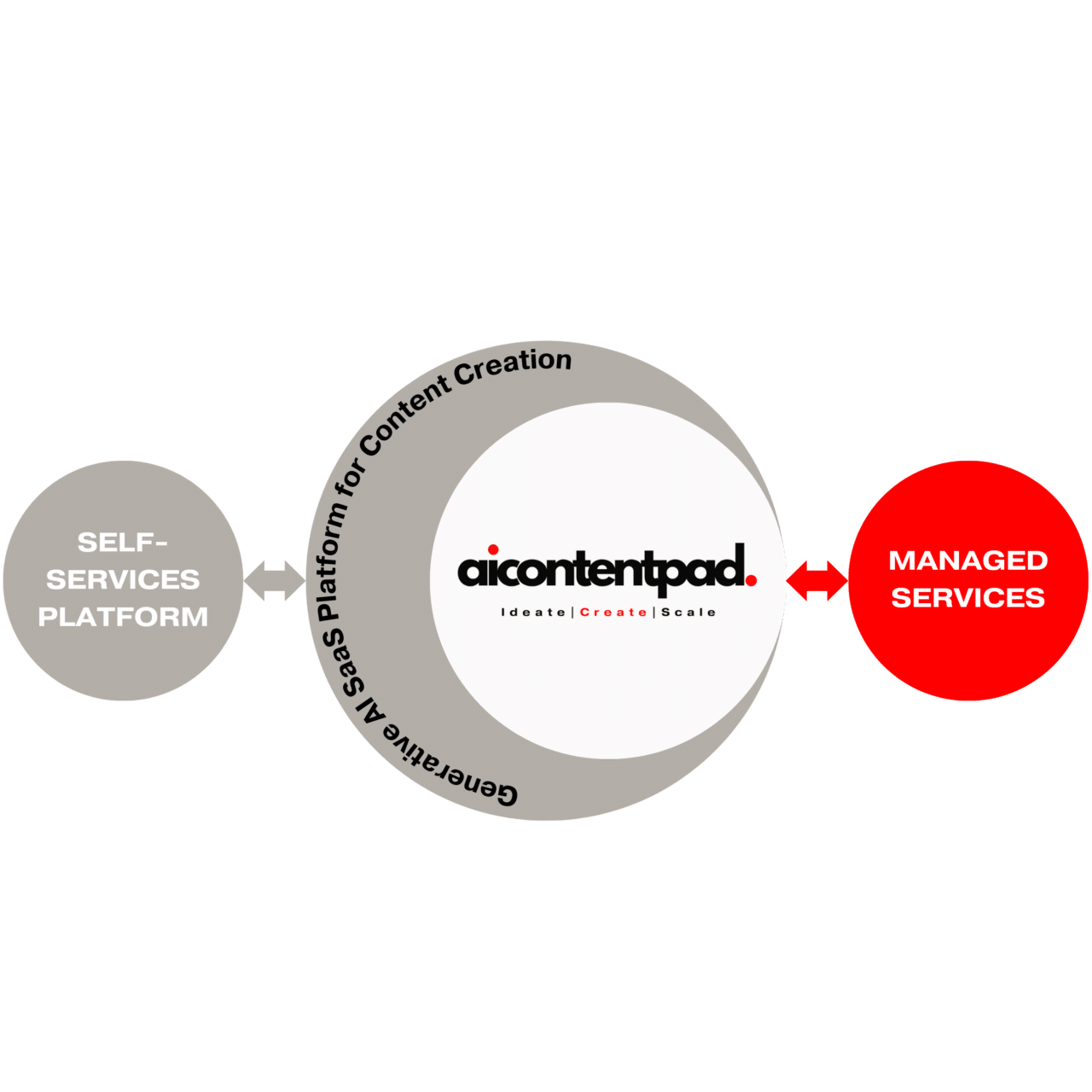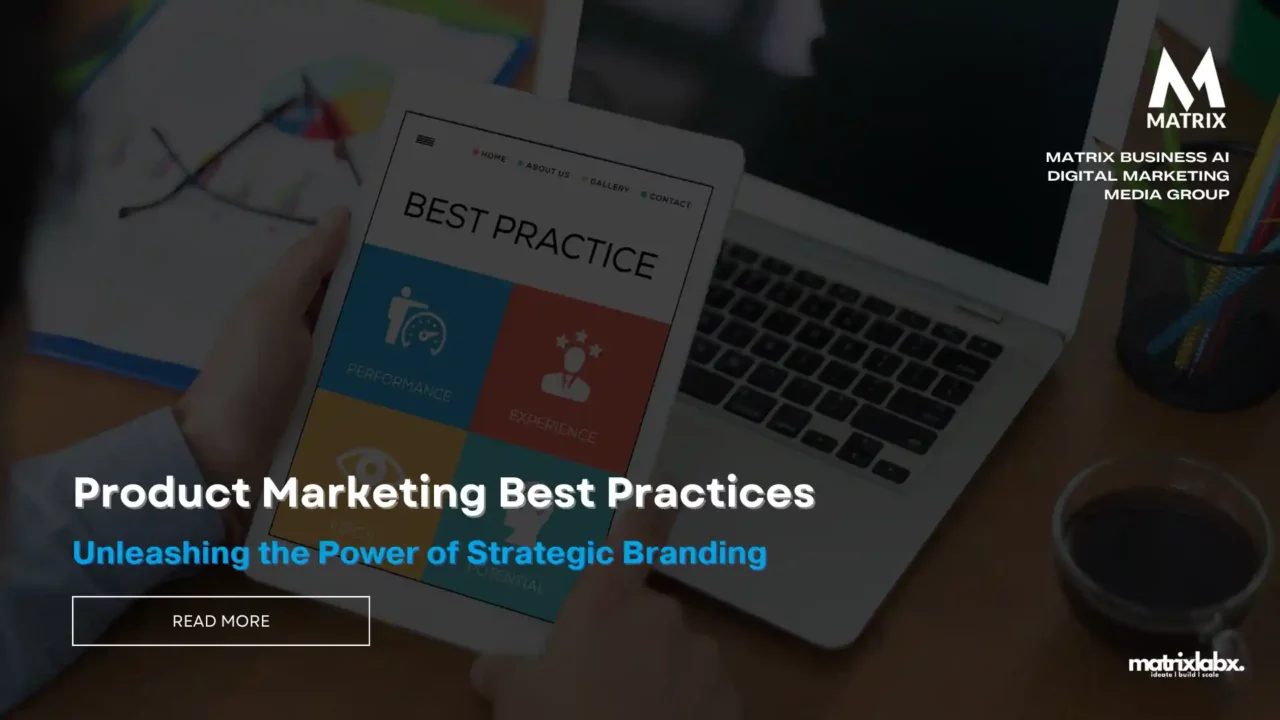Product Marketing Best Practices: Unleashing the Power of Strategic Branding
In today’s highly competitive marketplace, effective product marketing has become crucial for businesses of all sizes. To stay ahead of the game, it is essential to implement effective strategies that will attract customers, create brand loyalty, and drive sales.
This blog post explores the best practices in product marketing, providing valuable insights and actionable tips for businesses looking to optimize their marketing efforts.
1. Understanding Your Target Audience:
To effectively market a product, it is paramount to understand the needs, preferences, and pain points of your target audience. Conducting thorough market research and creating buyer personas can help you tailor your marketing messages and campaigns to resonate with your potential customers. Content Translation Services: A Competitive Advantage for Your Business
Artificial intelligence (AI) can play a significant role in helping manufacturing companies generate $75 million in proven sales by providing deeper insights into their target audience. Here are some specific ways AI can be utilized:
1. Customer Segmentation and Persona Development:
AI algorithms can analyze vast amounts of customer data to identify patterns and trends, enabling manufacturing companies to segment their customer base into distinct groups based on shared characteristics, preferences, and behaviors. By understanding these segments, companies can develop targeted personas that accurately represent their ideal customers.

2. Customer Lifetime Value (CLV) Prediction:
AI can predict each customer’s long-term value, allowing companies to prioritize resources and marketing efforts towards those with the highest potential for generating revenue. This data-driven approach helps companies maximize their return on investment (ROI) and focus on the most profitable customer segments.
3. Customer Sentiment Analysis:
AI can analyze customer reviews, social media interactions, and online feedback to identify sentiment trends and understand customer satisfaction levels. This real-time insight enables companies to address customer concerns promptly, improve product quality, and enhance overall customer satisfaction. What are CMOs Top Priorities in 2023?
4. Predictive Analytics for Customer Behavior:
AI algorithms can analyze historical customer purchase patterns and demographic data to predict future behavior, such as product preferences, purchase likelihood, and churn risk. This predictive insight empowers companies to personalize marketing campaigns, offer targeted promotions, and proactively address customer issues before they arise.
5. Customer Journey Mapping:
AI can help manufacturing companies map the customer journey, identifying the touchpoints customers interact with throughout their lifecycle, from initial awareness to post-purchase interactions. This comprehensive understanding of the customer journey allows companies to optimize their marketing strategies and improve customer experience at every stage.
Activate Your Brand For More Sales Today!
6. Customer Churn Prediction and Prevention:
AI can analyze customer behavior data to identify patterns that indicate a high risk of churn, enabling companies to proactively intervene and retain valuable customers. This data-driven approach helps companies reduce customer churn and maintain a loyal customer base.
7. Customer Acquisition and Lead Generation:
AI can assist in customer acquisition efforts by identifying potential leads based on specific criteria and predicting the likelihood of conversion. This targeted approach helps companies focus their marketing efforts on the most promising leads, increasing their chances of success.
8. Customer Support and Chatbots:
AI-powered chatbots can provide 24/7 customer support, answering frequently asked questions, addressing customer concerns, and resolving common issues. This automated support reduces the burden on human agents, allowing them to focus on more complex customer interactions.
9. Personalized Product Recommendations:
AI can analyze customer purchase history, browsing behavior, and demographic data to recommend products that align with their preferences and needs. This personalized approach enhances the shopping experience, increases customer satisfaction, and drives sales. Digital Marketing for Solar Companies to Increase Sales
10. Real-Time Customer Feedback Analysis:
AI can analyze customer feedback in real-time, identifying common themes, trends, and areas for improvement. This immediate insight enables companies to address customer concerns promptly, adapt their product offerings, and enhance overall customer satisfaction.
By effectively utilizing AI, manufacturing companies can gain a deeper understanding of their target audience, personalize their marketing strategies, improve customer satisfaction, and drive sales growth to achieve the $75 million revenue target.
2. Conducting Competitive Analysis:

Analyzing your competitors’ marketing strategies and positioning can provide valuable insights into the market landscape. By identifying gaps and opportunities, you can differentiate your product and create a compelling value proposition that differentiates you from the competition.
Sure, here is a summary of why conducting competitive analysis with AI is better, along with five of the best competitive analysis prompts:
Why Conducting Competitive Analysis with AI is Better
In today’s competitive business landscape, conducting thorough competitive analysis is crucial for making informed decisions and gaining a strategic edge. While traditional methods of competitive analysis can provide valuable insights, leveraging AI-powered tools offers several significant advantages:
- Enhanced Data Collection and Processing: AI can automate the process of gathering and analyzing vast amounts of data from various sources, including websites, social media, and industry reports. This automation eliminates the need for manual data collection, saving time and reducing the risk of human error.
- Real-time Insights and Trend Tracking: AI algorithms can continuously monitor competitor activities, providing real-time insights into product launches, marketing strategies, and customer feedback. This real-time visibility enables businesses to react promptly to market shifts and identify new opportunities.
- Unbiased Analysis and Pattern Recognition: AI can analyze data without preconceived notions or biases, revealing hidden patterns and trends that might go unnoticed in traditional analysis. This unbiased approach leads to deeper insights and more informed decision-making. What is HubSpot Consulting?
- Predictive Analytics and Future Forecasting: AI can utilize historical data and current trends to predict future competitor actions, market developments, and customer behavior. This predictive capability prepares businesses for challenges and proactively capitalize on opportunities.
- Scalability and Adaptability: AI-powered competitive analysis tools can scale to accommodate growing data volumes and adapt to changes in the competitive landscape. This adaptability ensures that businesses can maintain their competitive edge over time.
Five of the Best Competitive Analysis Prompts
- Identify your key competitors: Define your primary competitors and understand their target audience, market share, and product offerings.
- Analyze competitor strengths and weaknesses: Evaluate each competitor’s strengths and weaknesses in product features, pricing strategies, marketing approaches, and customer service.
- Track competitor pricing and promotions: Monitor competitor pricing trends and promotional activities to identify potential differentiation and pricing adjustment opportunities.
- Assess competitor customer reviews and sentiment: Analyze customer reviews and online sentiment to understand customer perceptions of competitor products and services.
- Monitor competitor social media engagement and content: Evaluate competitor social media presence, engagement levels, and content strategies to identify trends and potential areas for improvement.
By effectively utilizing AI-powered competitive analysis tools and following these prompts, businesses can comprehensively understand their competitive landscape, make informed decisions, and achieve their strategic goals.

AI Toolkit for Technology Companies
We’ve included a complete list of AI tools for technology firms, with over 800 free prompts and an AI Cheat Sheet to help you get started and leverage artificial intelligence faster.
AI Toolkit for Technology Companies
3. Crafting a Unique Value Proposition:
A strong value proposition is a key differentiator highlighting your product’s unique benefits and value. It should communicate your product’s superiority and address customers’ pain points, ultimately convincing them to choose your product over competitors.
Sure, here is an example of crafting a unique value proposition (UVP) for a healthcare institution in Vermont:
Unique Value Proposition for a Healthcare Institution in Vermont
Vision: To be the trusted partner for Vermonters’ lifelong health and well-being.
Mission: To provide comprehensive, high-quality, and compassionate healthcare services accessible and affordable for all Vermonters.
Core Values:
- Patient-centered care: We place the patient at the center of everything we do, listening to their needs and concerns and providing care tailored to their circumstances.
- Excellence: We strive for excellence in everything, from clinical care to administrative services.
- Compassion: We treat our patients with compassion and empathy, understanding that illness and injury can be difficult and stressful.
- Teamwork: We believe in the power of teamwork and collaboration to achieve our shared goals. Free HubSpot CMS Tools
- Innovation: We are committed to innovation and continuous improvement, seeking new ways to deliver better patient care.
Unique Value Proposition:
We are the only healthcare institution in Vermont that offers:
- A comprehensive network of primary care providers, specialists, and hospitals.
- A strong commitment to preventive care and wellness programs.
- A dedicated team of patient navigators who help patients navigate the healthcare system and access the care they need.
- A state-of-the-art electronic health record (EHR) system allows us to provide seamless care across our entire network.
- A commitment to affordable care to all Vermonters, regardless of their income or insurance status.
Process for Developing the UVP
Are Your Marketing Efforts a Shot in the Dark? Let’s Turn on the Spotlight!
Imagine having the clarity of seeing your marketing strategy from a bird’ s-eye view and understanding every nuance of your campaigns. Our comprehensive audit delves into the core of your marketing DNA, dissecting each campaign with surgical precision to identify the powerhouse strategies and weed out the underperformers.

The following steps were taken to develop the UVP:
- Conduct market research: We conducted market research to understand the needs of our target audience, which includes Vermonters of all ages and socioeconomic backgrounds.
- Analyze competitive landscape: We analyzed the competitive landscape to identify what makes our healthcare institution unique and what sets us apart.
- Define core values: We defined our core values to ensure that our UVP is aligned with our organization’s mission and vision.
- Conduct internal interviews: We interviewed key organizational stakeholders to gather their input on the UVP.
- Refine and finalize UVP: We refined and finalized the UVP based on the feedback we received from our market research, competitive analysis, core values, and internal interviews.
Results of the UVP
The UVP has been well-received by our target audience and has helped to improve our brand awareness and reputation. We have also seen an increase in patient inquiries and referrals.
Additional Considerations
In addition to the steps outlined above, the following considerations are important when developing a UVP:
- The UVP should be clear, concise, and easy to understand.
- The UVP should be relevant to your target audience.
- The UVP should be differentiated from your competitors.
- The UVP should be measurable.
- The UVP should be actionable.
I hope this information is helpful. Please let me know if you have any other questions.
4. Building a Compelling Brand Story:
Every product has a story behind it, and crafting a compelling brand story can help create an emotional connection with your audience. Share your brand’s mission, values, and journey to establish authenticity and build trust.

Better Search Ranking
Better Search Ranking in 90 days
SEO is extremely important for companies to rank well in search engines because it is the primary way that people find information online.
5. Creating Consistent Brand Messaging:
Consistency is vital in product marketing. All communication channels, including website copy, social media posts, and advertising campaigns, should align with your brand’s tone, language, and values. This consistency reinforces your brand identity and helps customers recognize and remember your product.
6. Utilizing Data to Inform Marketing Strategies:
Data-driven marketing allows you to make informed decisions based on real-time insights. Analyzing customer behavior, engagement metrics, and sales data helps you refine your marketing strategies, optimize campaigns, and identify areas for improvement.
7. Leveraging Influencers and Advocates:
Influencer marketing has become a powerful tool in product promotion. Collaborating with influencers or brand advocates with a strong following can help expand your reach, build credibility, and generate buzz around your product.
8. Creating Engaging Content:
Content marketing plays a significant role in product marketing.
By creating educational and entertaining content, such as blog posts, videos, or infographics, you can establish yourself as an authority in your industry and attract potential customers seeking information about your product.
In the dynamic world of product marketing, content marketing has emerged as a powerful tool to engage potential customers, establish brand authority, and ultimately drive sales. Content marketing seamlessly integrates with product marketing strategies, offering a synergistic approach that amplifies the impact of both disciplines.
1. Educating and Nurturing Leads:
Content marketing is crucial in educating and nurturing leads throughout the customer journey, from initial awareness to purchase consideration. By creating informative and engaging content that addresses customer pain points and showcases the product’s value proposition, product marketers can effectively guide potential customers toward a buying decision.
2. Establishing Brand Expertise and Thought Leadership:
Effective content marketing positions a company as a thought leader, demonstrating expertise and building trust among target audiences. By consistently producing high-quality content that resonates with readers, product marketers can establish their brand as a reliable source of information and insights.
3. Driving Organic Traffic and Search Engine Optimization:
Content marketing is a powerful driver of organic traffic, attracting potential customers through search engines and social media platforms. By optimizing content with relevant keywords and phrases, product marketers can increase their website’s visibility and attract qualified leads.
4. Enhancing Customer Engagement and Retention:
Content marketing fosters deeper engagement with existing customers, informing them about product updates, providing valuable resources, and strengthening brand loyalty. This ongoing interaction fosters long-term customer relationships and encourages repeat business.
5. Supporting Product Launches and Promotions:
Content marketing generates buzz and excitement around product launches and promotions. By creating engaging content that highlights new features, benefits, and use cases, product marketers can effectively drive product adoption and increase sales.
6. Gathering Customer Feedback and Insights:
Content marketing provides a platform for gathering valuable customer feedback through comments, social media interactions, and surveys. This feedback loop allows product marketers to continuously improve the product and messaging to better align with customer needs and expectations.
7. Building a Strong Online Presence:
Content marketing contributes to building a strong online presence for a company, creating a hub of relevant information that attracts, engages, and converts potential customers. This online presence is a valuable asset for brand awareness and customer acquisition.
Content marketing is an indispensable tool for product marketers, providing a strategic approach to educating leads, establishing brand authority, and driving sales. By leveraging the power of content, product marketers can effectively navigate the customer journey, fostering long-lasting relationships and achieving sustainable growth for their products and brands.

9. Utilizing Social Media Platforms:
Social media platforms offer a vast opportunity for product marketing. Identify the platforms where your target audience is most active, and create a comprehensive social media strategy. Engage with your audience, respond to their queries, and share relevant content to build brand awareness and foster customer loyalty.
10. Implementing a Multi-Channel Approach:
Adopting a multi-channel marketing approach ensures your product reaches potential customers through various touchpoints. Consider leveraging channels like email marketing, search engine optimization (SEO), pay-per-click (PPC) advertising, and offline marketing to maximize your product’s exposure.
Enhancing Customer Experience and Gaining a Competitive Edge with an Omnichannel Conversational AI Strategy
In today’s competitive financial landscape, providing a seamless and personalized customer experience is crucial for success. Omnichannel conversational AI offers a transformative approach to achieving this goal, enabling financial institutions to engage with customers across multiple channels in a unified and intelligent manner. This presentation will outline the key benefits and implementation considerations for adopting an omnichannel conversational AI strategy.
Key Benefits of Omnichannel Conversational AI
- Unified Customer Experience: By integrating conversational AI across multiple channels, such as mobile apps, websites, social media, and chat platforms, financial institutions can provide a consistent and personalized customer experience regardless of the channel they choose. This seamless transition enhances customer satisfaction and loyalty.
- Enhanced Customer Service: Conversational AI can handle routine customer inquiries, allowing human agents to focus on more complex issues. This efficient approach reduces wait times, improves resolution rates, and enhances customer service satisfaction.
- Personalized Interactions: Conversational AI can leverage customer data to personalize interactions, providing tailored recommendations, product suggestions, and financial advice. This personalized approach fosters stronger customer relationships and drives engagement.
- 24/7 Availability: Conversational AI is available 24/7, providing customers with real-time support and assistance, regardless of the time of day. This continuous availability enhances customer convenience and satisfaction.
- Cost-Effectiveness: Conversational AI can automate many aspects of customer service, reducing operational costs and improving efficiency. This cost-effectiveness allows financial institutions to allocate resources more strategically.
Implementation Considerations for Omnichannel Conversational AI
- Define Clear Goals: Clearly define the goals of implementing an omnichannel conversational AI strategy, such as improving customer satisfaction, reducing wait times, or increasing sales.
- Identify Customer Needs: Conduct thorough customer research to understand their needs, preferences, and pain points. This understanding will guide the development of a conversational AI solution that effectively addresses customer needs.
- Choose the Right Technology: Select a conversational AI platform that aligns with the institution’s specific requirements, considering factors such as scalability, security, and integration capabilities.
- Integrate with Existing Systems: Ensure seamless integration of the conversational AI platform with existing customer relationship management (CRM) and other relevant systems to maintain a unified customer view.
- Continuous Improvement: Continuously monitor and evaluate the performance of the conversational AI solution, making adjustments and improvements based on customer feedback and data analysis.
An omnichannel conversational AI strategy offers a powerful tool for financial institutions to enhance customer experience, improve operational efficiency, and gain a competitive edge in the market.
Financial institutions can effectively leverage conversational AI to achieve their strategic goals and deliver exceptional customer service by carefully considering the key benefits and implementation considerations.
11. Optimizing Product Descriptions and Packaging:
Your product’s description and packaging are essential components of its marketing. Craft compelling, informative, and visually appealing descriptions highlighting the product’s key features and benefits. Optimize packaging to create an impactful first impression and reflect your brand’s identity.
12. Incorporating Customer Feedback:
Feedback from your customers is invaluable in shaping your product marketing strategies. Actively seek customer feedback, reviews, and ratings to gain insights into their experiences and identify areas for improvement. Incorporating positive feedback into your marketing communications can boost customer trust and loyalty.
13. Nurturing Customer Relationships:
Building strong and lasting relationships with customers is crucial for successful product marketing. Implement personalized email campaigns, loyalty programs, and excellent customer service to foster customer loyalty and encourage repeat purchases.
14. Monitoring and Measuring Marketing Performance:
Regularly monitoring and measuring your marketing performance is essential for identifying what works and needs improvement. Utilize analytics tools to track key performance indicators (KPIs) like conversion rates, customer acquisition costs, and customer lifetime value, allowing you to make data-driven adjustments to your marketing strategies.
15. Staying Updated with Market Trends:
The marketing landscape is dynamic and constantly evolving. It is crucial to stay updated with emerging trends, industry news, and technological advancements to stay ahead. By anticipating market changes, you can adapt your marketing strategies proactively and maintain a competitive edge.
16. Embracing Innovation:

Successful product marketing often involves embracing innovative approaches. Leverage technologies like artificial intelligence, virtual, or augmented reality to create unique, immersive experiences that captivate your audience and drive engagement.
17. Collaborating with Sales Team:
Aligning your product marketing efforts with your sales team is crucial for driving revenue. Regular communication and collaboration ensure that the marketing messages are effectively translated into compelling sales pitches, empowering your sales team to close deals more effectively.
18. Conducting A/B Testing:
A/B testing allows you to experiment with different marketing strategies, messages, or designs to determine which resonates best with your target audience. You can refine and optimize your marketing campaigns for better performance by testing and analyzing the results.
19. Keeping a Customer-Centric Approach:
A customer-centric approach should underpin all product marketing initiatives. Understand your customers’ needs and aspirations and prioritize their satisfaction. By delivering exceptional value and experiences, you can cultivate customer loyalty and advocacy.
20. Continuous Learning and Improvement:
Finally, product marketing best practices require continuous learning and improvement. Stay curious, invest in professional development, and seek customer, colleague, and industry expert feedback. Embrace change and continuously adapt your strategies to stay relevant in today’s ever-changing market.
Conclusion:
Effective product marketing is an art that requires a thorough understanding of your audience, a strategic approach, and a commitment to continuous improvement.
Incorporating these best practices into your marketing strategies allows you to position your product for success, differentiate your brand, and drive revenue growth. Remember, successful product marketing is not a one-time endeavor but an ongoing process that requires adaptability, creativity, and a customer-centric mindset.

